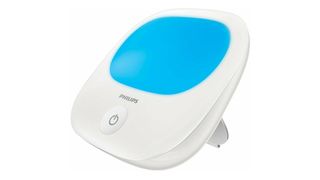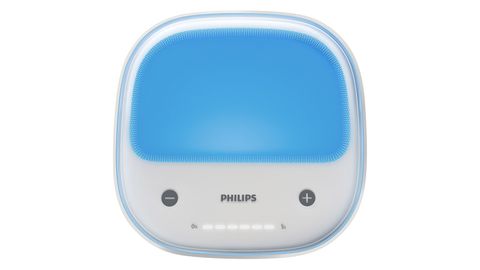We tested the Philips goLITE BLU Energy because it’s made by one of the biggest manufacturers of consumer health products. Unfortunately, the light coverage and lux brightness were very minimal, meaning that it failed to make our list of the best therapy lamps. In recent years, some manufacturers have started making blue light sun therapy lamps based on the theory that blue light simulates a clear blue sky. However, experts argue that there is no evidence to support this theory.
But perhaps more importantly, the Center for Environmental Therapeutics (CET), a non-profit organization of light therapy experts, warns against using blue light because it can cause severe aversive glare. In addition, the relative proximity to UV on the light spectrum means it can cause photosensitizing reactions if you take some types of prescription drugs, which can lead to retinal damage.
Many people use these types of lamps to give their mood a boost. Exercise is another great mood booster, as is sleep. With that in mind, onsider using one of the best fitness trackers to get more active each day, while for sleep take a look at our guides to the best mattress online and the best pillows.
Philips goLite BLU Energy: Features
Because the goLITE BLU Energy is so compact, it's easy to travel with and can potentially help alleviate symptoms of jet lag when you take it on the road. The lamp's surface is 5.63 inches tall by 5.63 inches wide, so it fits in a purse or carry-on luggage. It also comes with a storage pouch for a little extra protection when you pack it. However, since the lamp is so small, it lacks the necessary coverage for effective therapeutic use for seasonal affective disorder.

Philips goLite BLU Energy: Performance
The goLITE BLU Energy has five brightness levels, though I'm not sure why. The brightest setting didn't reach 8,000 lux on the light meter, and that was with the sensor placed directly on the light. That said, Philips never claims that this is a 10,000-lux light. Rather, the manufacturer says it's as effective as a 10,000-lux light. Unfortunately, there isn't any evidence to support this. In addition, despite being one of the dimmest light therapy lamps we've tested, the blue light wasn't particularly comfortable to sit under, so its effectiveness is questionable.
The Philips goLITE BLU Energy’s best feature is its low heat output. Blue light doesn't produce as much heat radiation as full-spectrum light, so it doesn’t get uncomfortably hot. For example, in our tests, the lamp’s surface temperature reached only 85 degrees Fahrenheit after 30 minutes. By comparison, the Day-Light Sky reaches 122 degrees, and the Aura Daylight reaches a scalding 144 degrees. And when aimed at a wall from a distance of 16 inches, those two lamps increase the wall’s temperature by nearly 2 degrees, while the goLITE BLU Energy barely increased its temperature by 0.2 degrees.
Should you buy the Philips goLITE BLU Energy?
The Philips goLITE BLU Energy is a compact lamp, but its blue light isn't recommended by experts in the field. In addition, despite having low brightness measurements, the blue light could've been more comfortable on the eyes.
That said, it has potential to help alleviate jet lag symptoms, and its small size makes it great for traveling. It's just not recommended for long-term use to treat seasonal affective disorder.

